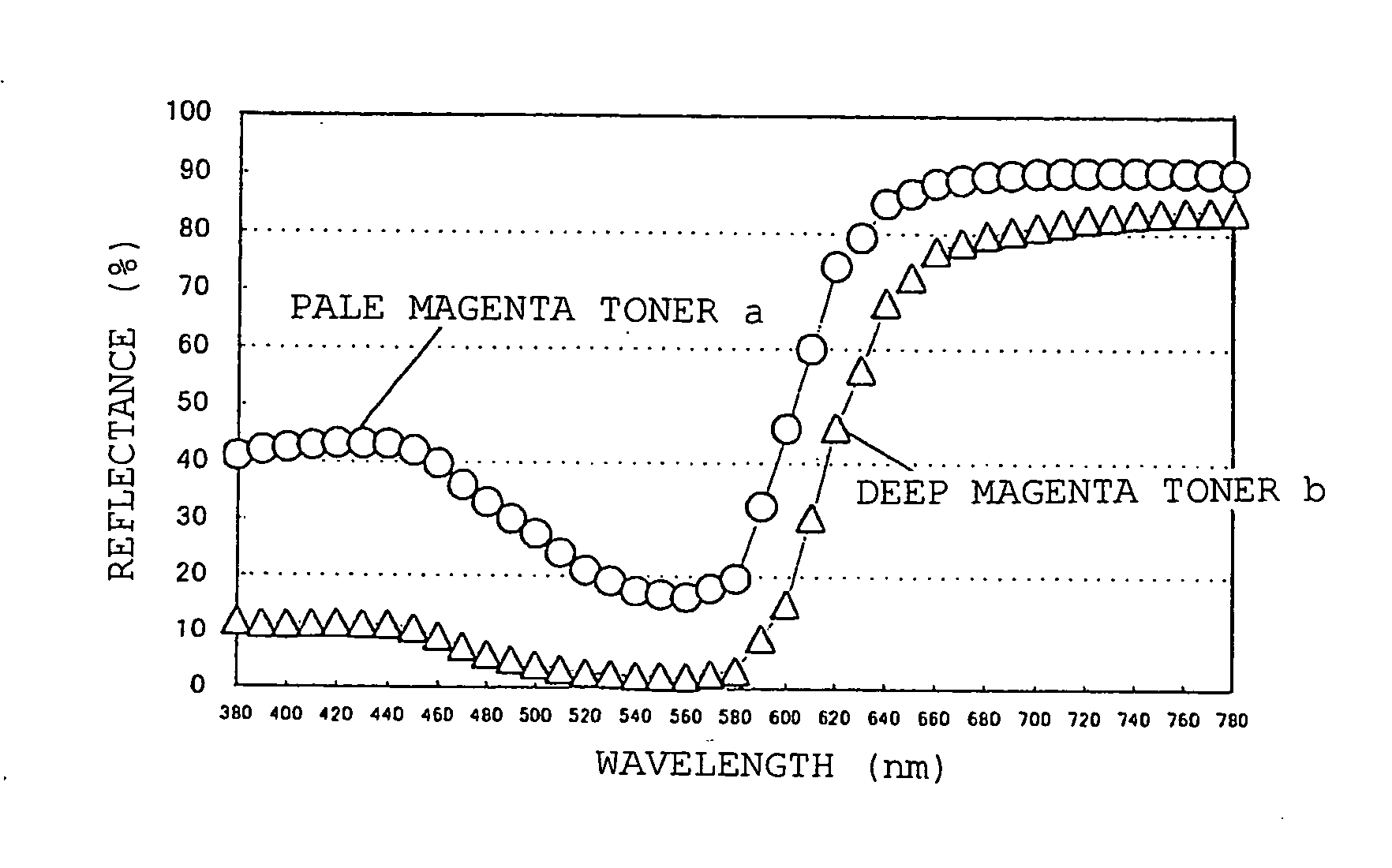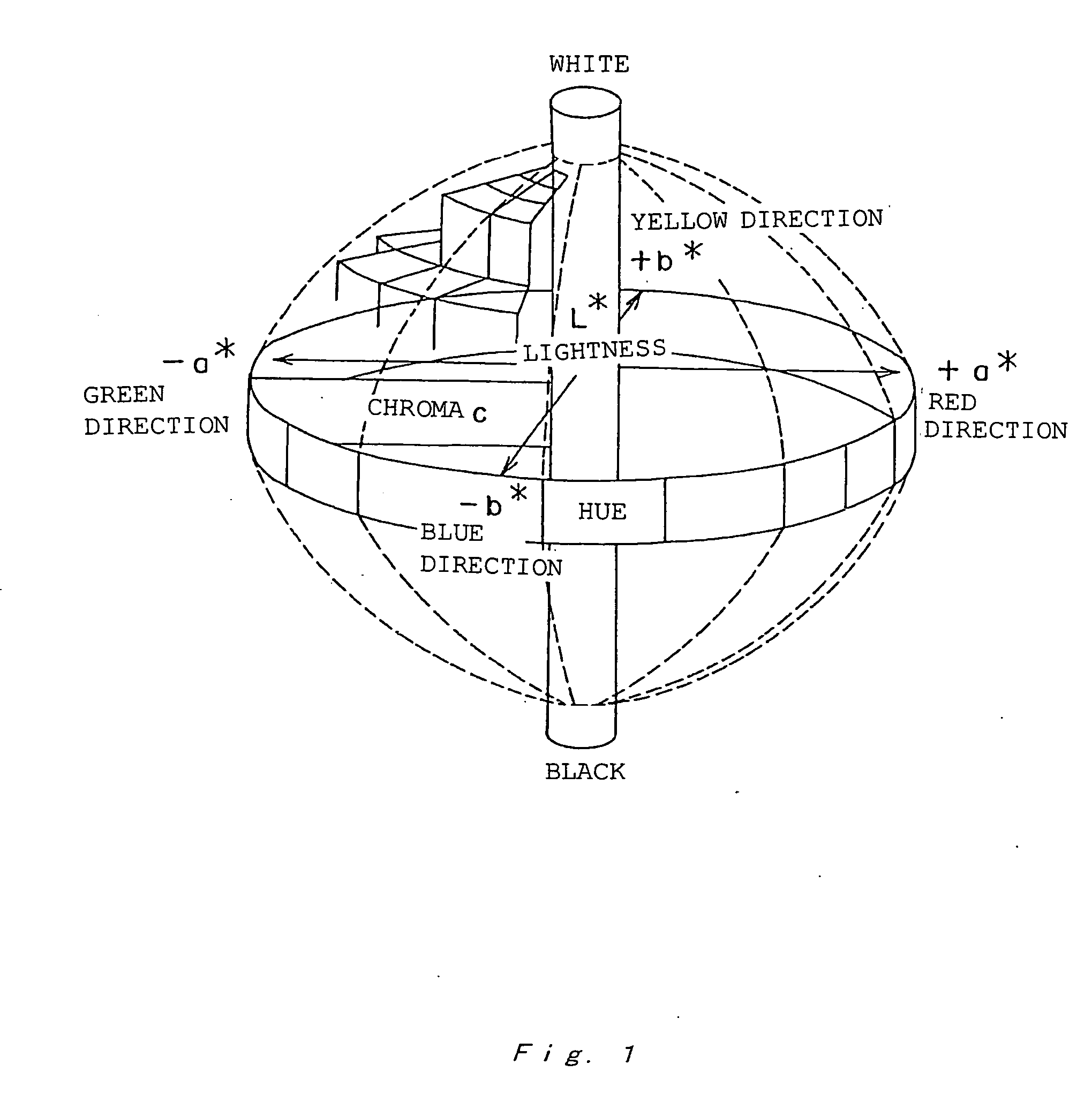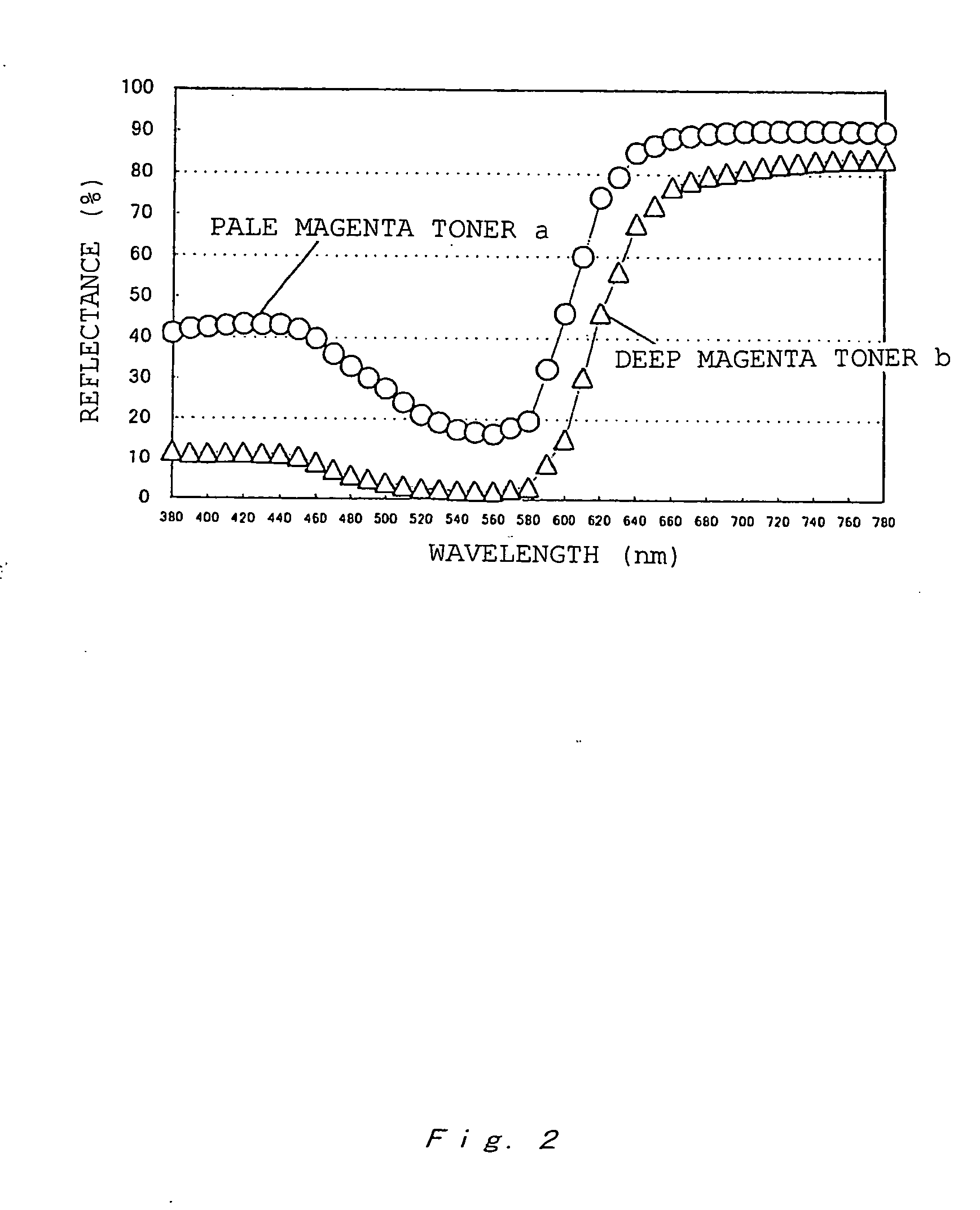Toner and method for forming image
a technology of toner and image, applied in the field of toner, can solve the problems of increasing the difficulty of reproducing the latent image formed with minute dots, the inability to obtain a toner image corresponding to the ratio of the dot densities of the inability to obtain a toner image corresponding to the ratio of the dot densities of the black and white portions of the digital latent image, etc., to achieve a wide color reproduction rang
- Summary
- Abstract
- Description
- Claims
- Application Information
AI Technical Summary
Benefits of technology
Problems solved by technology
Method used
Image
Examples
example 1
(First Kneading Step)
Polyester resin (I) 70 parts by massPasty colorant comprising C.I. Pigment100 parts by massRed 122 and C.I.Pigment Red 57:1
The above raw materials were charged in a kneader-type mixer following the above recipe and were heated without pressure while mixing. Pigments in an aqueous phase partitioned or shifted to a molten resin phase at the time when the mixture reached the maximum temperature (naturally determined by the boiling point of a solvent in the paste, about 90 to 100° C. in this case). After the partition or shift of the pigments was observed, the mixture was further heated and melt-kneaded for 30 minutes to sufficiently shift the colorant in the paste. Then, the mixer was stopped once, and hot water was discharged. The mixture was further heated to 130° C., further heated and melt-kneaded for about 30 minutes to disperse the colorant while distilling off the water content, and was then cooled, to thereby obtain a first kneaded product (I).
The pas...
example 2
A magenta toner a-2 was prepared similar to Example 1 except that a wax dispersant masterbatch containing a wax (F) and a wax dispersion medium (II) was used instead of the wax dispersant (I) masterbatch, to thereby obtain a magenta developer a-2. The magenta developer a-2 was evaluated similar to Example 1. Table 7 shows that the magenta developer a-2 had better low-temperature fixability and slightly poor high-temperature offset property compared to those of Example 1 but was within an adequately practical level.
example 3
A magenta toner a-3 was prepared similar to Example 1 except that a wax dispersant masterbatch containing a wax (G) and a wax dispersion medium (III) was used instead of the wax dispersant (I) masterbatch, to thereby obtain a magenta developer a-3. The magenta developer a-3 was evaluated similar to Example 1. Table 7 shows that the magenta developer a-3 had better high-temperature offset property and slightly poor low-temperature fixability compared to those of Example 1 but was within an adequately practical level.
PUM
| Property | Measurement | Unit |
|---|---|---|
| temperature | aaaaa | aaaaa |
| reflectance | aaaaa | aaaaa |
| reflectance | aaaaa | aaaaa |
Abstract
Description
Claims
Application Information
 Login to View More
Login to View More - R&D
- Intellectual Property
- Life Sciences
- Materials
- Tech Scout
- Unparalleled Data Quality
- Higher Quality Content
- 60% Fewer Hallucinations
Browse by: Latest US Patents, China's latest patents, Technical Efficacy Thesaurus, Application Domain, Technology Topic, Popular Technical Reports.
© 2025 PatSnap. All rights reserved.Legal|Privacy policy|Modern Slavery Act Transparency Statement|Sitemap|About US| Contact US: help@patsnap.com



